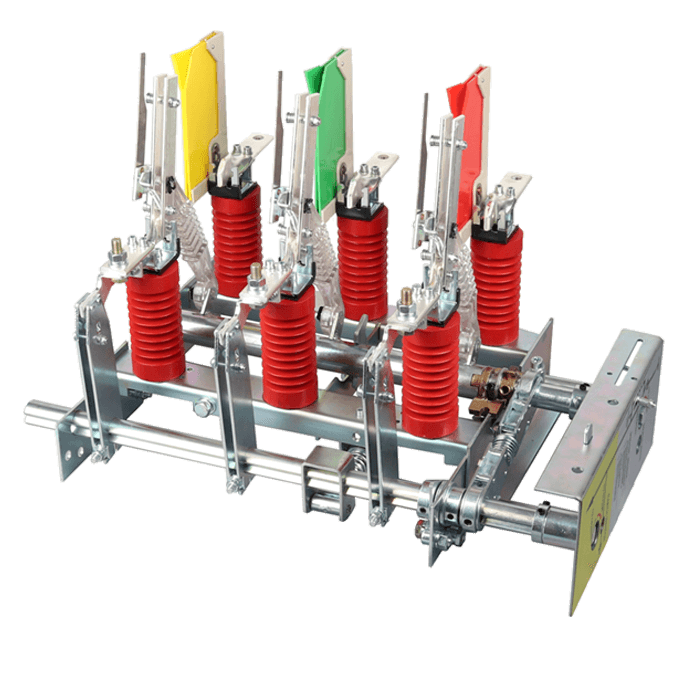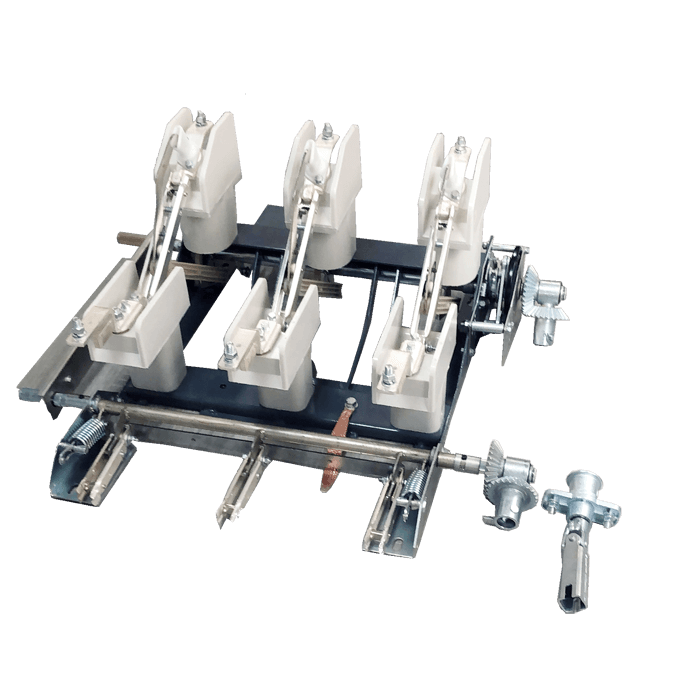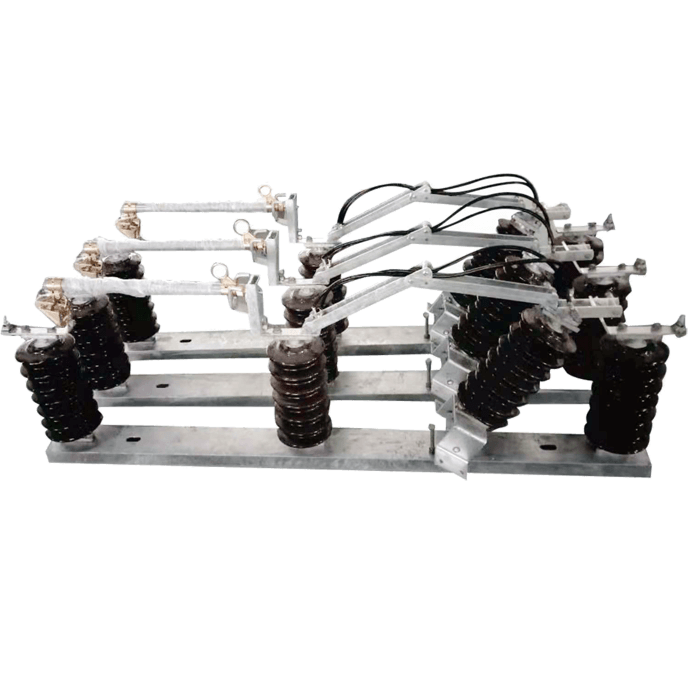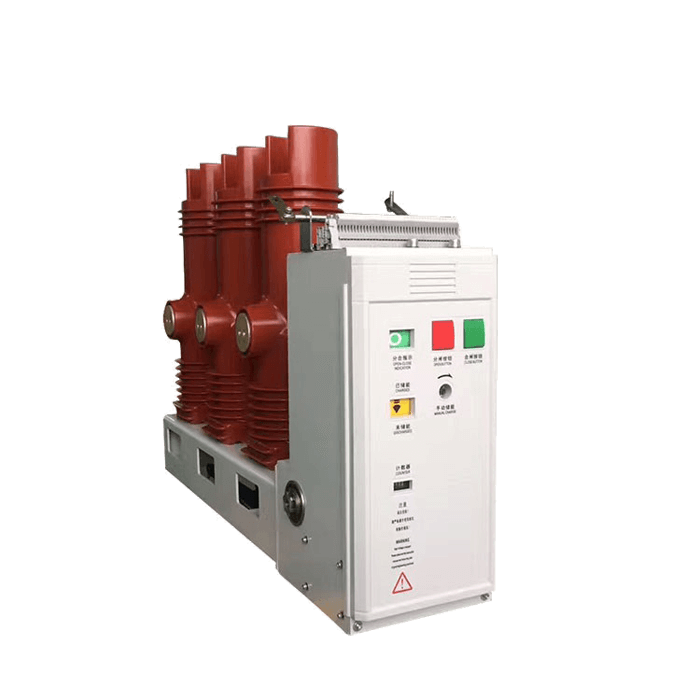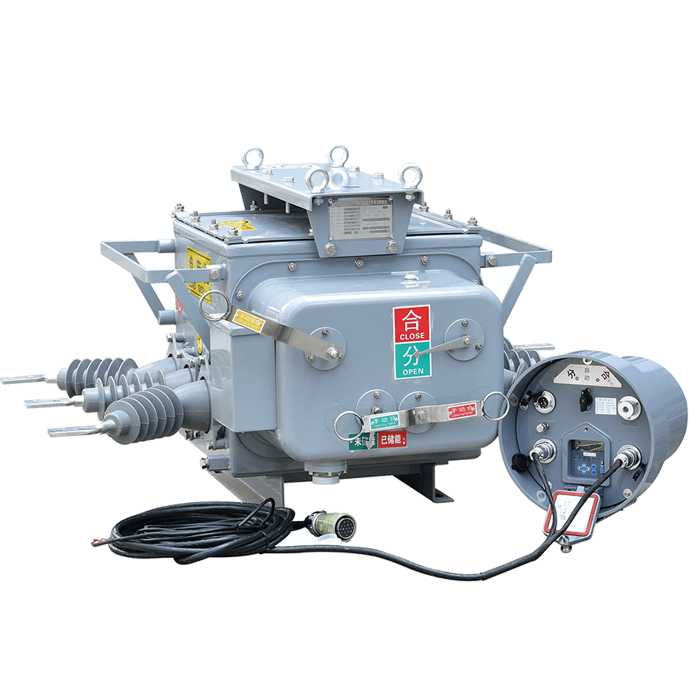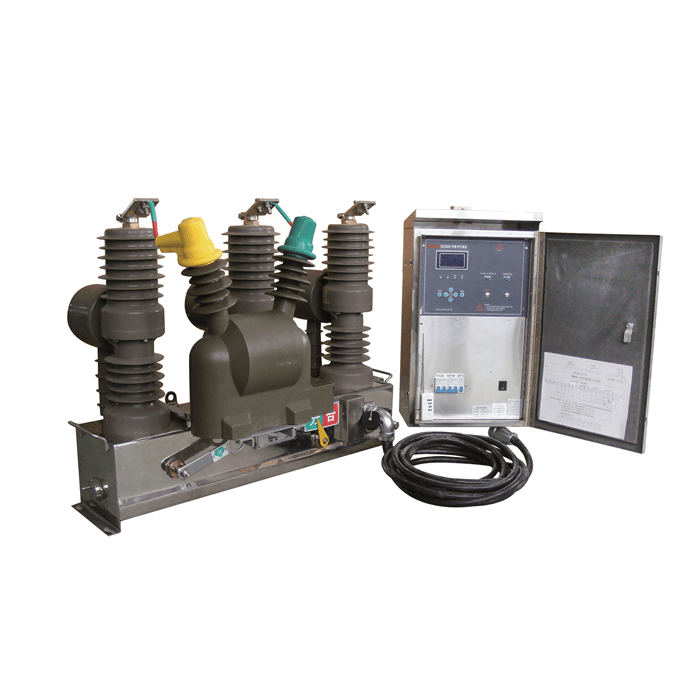Introduction, function and difference between load break switch and disconnect switch
1. What is a load switch?
It is a control electrical appliance with a simple arc extinguishing device that can divide and close the circuit with load. It can turn on and off a certain load current and overload current, but cannot disconnect the short-circuit current. It must be used in series with a high-voltage fuse, and the short-circuit current can be cut off with the help of the fuse.
FZW32 outdoor high voltage isolation vacuum load switch
The role of load switch:
1.1. Opening and closing functions. Because it has a certain arc extinguishing ability, it can be used to break and close the load current and the overload current of a certain multiple (usually 3-4 times); it can also be used to open and close the allowable capacity of the isolating switch. Larger no-load transformers and longer no-load lines are sometimes used to open and close large-capacity capacitor banks.
1.2. Substitution. The series combination of load switch and current limiting fuse can be used instead of circuit breaker. That is, the load switch is responsible for breaking and closing the overload current less than a certain multiple, and the current limiting fuse is responsible for breaking the larger overload current and short-circuit current.
1.3. The load switch in which the load switch and the current limiting fuse are combined in series into one is called "load switch-fuse combination appliance" in the national standard. The fuse can be installed on the power supply side of the load switch or on the power receiving side of the load switch. When the fuse does not need to be changed frequently, the former arrangement should be adopted, so that the load switch can be used as the isolation switch to isolate the voltage applied to the current-limiting fuse.
2. What is an isolation switch?
It is a control electrical appliance without an arc extinguishing device. Its main function is to isolate the power supply to ensure the safe maintenance of other electrical equipment, so it is not allowed to operate with load. However, under certain conditions, it is allowed to connect or disconnect low-power circuits. It is one of the most frequently used electrical devices in high-voltage switches.
The role of the isolation switch:
2.1. After opening, establish a reliable insulation gap, and separate the equipment or line that needs to be repaired from the power supply with an obvious disconnection point to ensure the safety of maintenance personnel and equipment.
2.2. According to the operation needs, change the circuit.
2.3. It can be used to divide and combine small currents in the line, such as the charging current of bushings, busbars, connectors, short cables, the capacitive current of switch balancing capacitors, the circulating current when double busbars are switched and the excitation current of voltage transformers Wait.
2.4. According to the specific situation of different structure types, it can be used to divide and combine the no-load excitation current of a certain capacity transformer.
According to the different installation methods, high-voltage isolation switches can be divided into outdoor high-voltage isolation switches and indoor high-voltage isolation switches.
Outdoor high-voltage isolating switches refer to high-voltage isolating switches that can withstand wind, rain, snow, dirt, condensation, ice and thick frost, and are suitable for installation on terraces.
It can be divided into single-column isolating switch, double-column isolating switch, and three-column isolating switch according to the structure of its insulating struts. Among them, the single-column isolating switch directly uses the vertical space as the electrical insulation of the fracture under the overhead busbar. Therefore, it has the obvious advantages of saving the floor space, reducing the lead wire, and at the same time, the opening and closing state is particularly clear. In the case of ultra-high voltage transmission, the effect of saving floor space is more significant after the substation adopts the single-column isolating switch.
In low-voltage equipment, isolating switches are mainly suitable for low-voltage terminal power distribution systems such as residential buildings and buildings.
Main functions: with load breaking and connecting lines.
3. The difference between load switch and isolating switch
The first difference is that the current cut by the two is not the same.
Because the isolating switch does not have an arc extinguishing device, it is only suitable for cutting off the unloaded current, but cannot cut off the load current and short-circuit current. Therefore, the isolating switch can only operate safely when the circuit is safely disconnected, and it is strictly equipped with load operation to avoid safety accidents.
Because the load switch has an arc extinguishing device, it can cut off the overload current and the rated load current, but it cannot cut off the short-circuit current. (Electrical Xiaoqiang reminds you: cut off the short-circuit current and find a circuit breaker for help.)
The second point is that the load switch has an arc extinguishing device, while the isolating switch does not have such a device.
So is there any difference between this arc extinguishing device? The so-called arc extinguishing device is to better help the opening and closing of the switchgear, and can also effectively limit the arc and help the arc extinguish. There is such an arc extinguishing device, which is safer for switching appliances. Therefore, most of the switching appliances are equipped with arc extinguishing devices. Especially home switch appliances.
The third point is that the two functions are different.
Because the isolation switch does not have an arc extinguishing device, it is generally used in the part of the high-voltage circuit device that needs to be live and the part that needs to be powered off to perform an isolation function, so as to ensure the maintenance and inspection of the high-voltage circuit by personnel and ensure the safety of personnel.
The load switch is applied to fixed high-voltage equipment, which can cut off the fault current and rated current in the high-voltage equipment, so the functions of the two are different, but both are applied to high-voltage equipment.
Of course, in low-voltage electrical appliances, there are also related isolating switches and load switches.
12KV load break switch, 12kv sf6 lbs, 12kv disconnector


